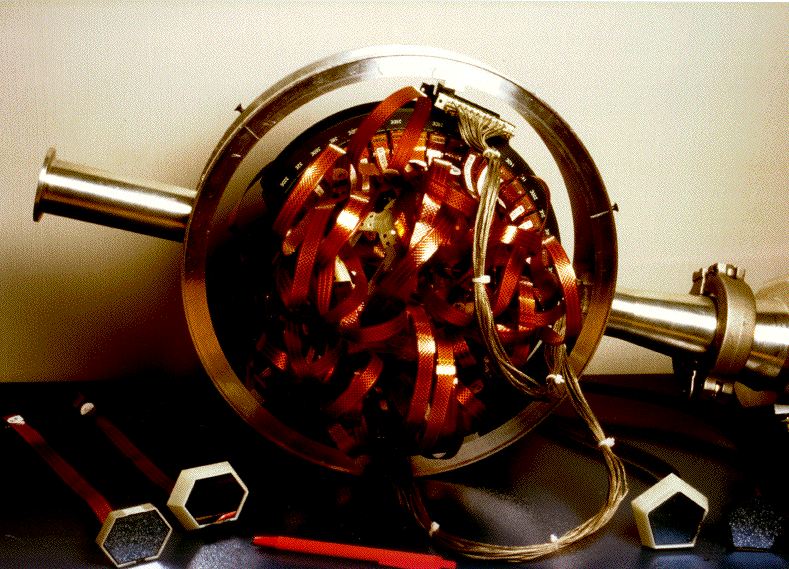The Silicon telescope array ISIS
ISIS is an array of 40
silicon dE-E telescopes which are used to detect light charged particles
(from protons to alphas) produced in the reactions.
 The detector assembly is a soccer like ball of 16 cm in diameter using
the 40 HpGe faces of the already mentioned polyhedron.
The detector assembly is a soccer like ball of 16 cm in diameter using
the 40 HpGe faces of the already mentioned polyhedron.
In this way each silicon
telescope is placed at the same angle of the HpGe detector, thus reducing the gamma-ray
absorption. The dE and E detectors have a thickness of 130 ~ µm and 1 mm respectively.
The dE(E) detectors of
the Si-ball covers a solid angle of about 76%(65%) of 4p and has
a telescope average detection efficiency of 50% and 40% for protons
and alphas respectively (Ref.1). 
The telescope event is
defined by the presence in the detected event of both energy and time signals in
the two detectors.
The efficiency reduction
is mainly due to the particle energy total absorption in the dE detector or in the
shielding foils used to stop the elastically scattered beam ions.
Clearly the selectivity
of GASP when coupled to both ISIS and CAMEL is increased considerably and this is
particularly important when studying weak channels.
 The detector assembly is a soccer like ball of 16 cm in diameter using
the 40 HpGe faces of the already mentioned polyhedron.
The detector assembly is a soccer like ball of 16 cm in diameter using
the 40 HpGe faces of the already mentioned polyhedron. 
 The detector assembly is a soccer like ball of 16 cm in diameter using
the 40 HpGe faces of the already mentioned polyhedron.
The detector assembly is a soccer like ball of 16 cm in diameter using
the 40 HpGe faces of the already mentioned polyhedron. 